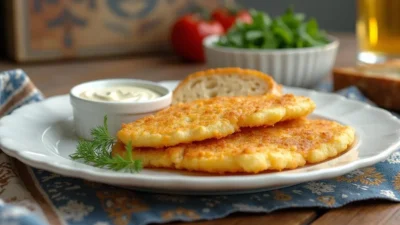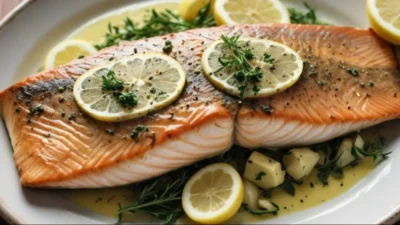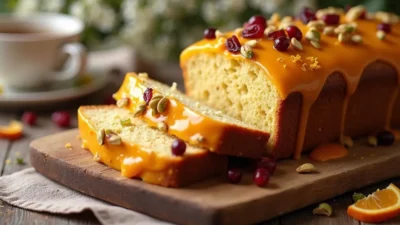Contents
- The History of French Toast: From “Lost Bread” to a Culinary Icon
- Choosing the Perfect Bread: The Foundation of Great French Toast
- The Custard Mixture: Magic in a Bowl
- Cooking French Toast: Technique and Timing
- Creative Toppings and Presentation
- Seasonal Variations: Adapting French Toast Year-Round
- Global French Toast Styles
- Pairing Drinks: Creating the Complete Breakfast Experience
- French Toast for Every Diet
- Troubleshooting Common Problems
- Creating a Family Tradition
- Conclusion: More Than Just Breakfast
There’s a special kind of magic in weekend mornings that weekdays rarely allow. The sun spills gently through the windows, casting long golden beams that seem to hug every corner of the room. Outside, the world is still waking up; the soft chirp of birds and the distant hum of early traffic create a calm symphony that complements the quiet of your home. Inside, your favorite playlist hums softly — maybe a mellow acoustic track, or jazzy piano notes — and somehow, the music, combined with the gentle light, makes time feel slower, more indulgent.
Then comes the aroma of coffee, rich and earthy, curling through the kitchen. It’s a scent that promises warmth, comfort, and just a hint of luxury, a smell that can make even the simplest morning feel like a special occasion. And in this perfect little moment, there is one breakfast that seems to embody the entire feeling of a relaxed, happy morning: French toast.
Not just any French toast, mind you. Picture thick slices of bread, golden and crisp at the edges, tender and custardy in the center, almost melting in your mouth. Imagine it topped with:
- Fresh, juicy berries that pop with each bite 🍓🫐
- A light dusting of powdered sugar ❄️
- A gentle drizzle of maple syrup, pooling along the edges 🍯
- A pat of butter slowly melting into every nook and cranny 🧈
Every bite is a comforting blend of textures and flavors, a sweet yet subtle indulgence that can turn an ordinary morning into something extraordinary.
French toast isn’t merely breakfast — it’s a ritual, a moment of pause, and a form of self-care. It evokes nostalgia, bringing back memories of childhood mornings: the rhythmic clink of a whisk, the gentle sizzle of butter in a pan, the warm smell of vanilla and cinnamon filling the kitchen. Its beauty lies in its simplicity: approachable for home cooks, yet rich enough to make you feel like you’re treating yourself. And the best part? French toast is endlessly adaptable. You can make it:
- Sweet or savory 🍫🥓
- Classic or exotic 🌰🍊
- Individual portions or large-family casseroles 🍽️
By the end of this guide, you’ll see that French toast is more than food. It’s a canvas for creativity, comfort, and pure joy, and mastering it will make your weekend mornings something to truly look forward to. 🥞✨
The History of French Toast: From “Lost Bread” to a Culinary Icon
Despite its name, French toast isn’t originally French. Its story stretches back centuries, a tale of ingenuity, comfort, and culinary evolution. The earliest known recipes come from ancient Rome, where cooks discovered a brilliant way to transform stale or dry bread into something nourishing and delicious. They would soak the bread in milk or wine, sometimes adding eggs, and fry it in oil or butter. This was a clever solution to a practical problem — nothing was wasted — but it was also surprisingly tasty.
As the centuries passed, the dish evolved in medieval Europe, becoming pain perdu, which literally means “lost bread.” French cooks refined the recipe, adding eggs, cream, and a touch of sugar or spices. What had started as a practical solution to leftover bread became a luxurious breakfast treat. By the time French toast crossed the Atlantic to North America, it had picked up a sweeter identity: think maple syrup, berries, and powdered sugar. Suddenly, French toast was no longer just a way to save stale bread — it was the centerpiece of indulgent weekend mornings.
What’s fascinating is how many cultures independently discovered the same principle: reviving bread with a custard bath and heat. For example:
- Spain: Torrijas are soaked in milk and sugar, fried, and traditionally served during Lent 🍯
- Hong Kong: French toast is often deep-fried and stuffed with peanut butter or custard 🥜
- England: “Eggy bread” is sometimes served as a savory breakfast with salt, pepper, or ketchup 🍳
No matter where it appears, the formula is the same: bread + custard + heat = joy. And yet, each culture adds its own twist, turning a simple dish into a story of local flavor, tradition, and creativity.
Choosing the Perfect Bread: The Foundation of Great French Toast
Bread is the undisputed hero of French toast. Its texture, structure, and flavor determine everything else — no custard or topping can compensate for a weak loaf. Choosing the right bread is the first step toward breakfast perfection.
Tips for selecting the best bread:
- Day-old bread works best: Slightly stale slices absorb the custard beautifully without collapsing.
- Brioche and challah: Buttery, slightly sweet, rich, and tender — perfect for indulgent weekend mornings. 💛
- Sourdough: Its tang balances sweet toppings, creating a more complex flavor profile.
- French baguette: If sliced thickly, it becomes crisp on the outside while tender inside.
Slice thickness matters: Aim for 1.5–2 cm. Too thin, and the bread will fall apart. Too thick, and it may be challenging to cook evenly. For very fresh bread, a quick air-dry or light toasting ensures it soaks the custard without turning into a mushy mess.
French toast is deceptively simple, but mastering it requires understanding your bread, your custard, and the perfect balance between soaking and frying. Once you do, you’ll have slices that are golden, tender, and irresistibly satisfying. 🥚🧈
The Custard Mixture: Magic in a Bowl
Custard is the true heart of French toast — the element that transforms ordinary slices of bread into something almost magical. With just a handful of ingredients — eggs, milk or cream, vanilla, cinnamon, and a pinch of salt — you can create a rich, velvety coating that soaks deep into the bread, resulting in an interior that’s soft, creamy, and utterly indulgent. But there’s a delicate balance to master.
If your custard is too thin, the bread won’t absorb enough liquid, leaving it dry and disappointing. Too thick, and the egg flavor overwhelms the dish, turning it dense and heavy rather than light and luscious. The secret lies in the proportions and in whisking with intention: slow, even strokes that fully combine the eggs and milk, while incorporating a hint of air, so the mixture is light yet cohesive.
Optional additions can elevate your custard to something extraordinary:
- Sugar or honey — just a teaspoon or two, enough to add subtle sweetness without being overpowering 🍯
- Nutmeg or cardamom — warm spices that add depth and a cozy aroma 🌰
- Citrus zest — orange or lemon for a bright, uplifting twist 🍊
As you whisk, the kitchen fills with a heady fragrance of cinnamon, vanilla, and spice — a sensory preview of the deliciousness to come. In that moment, even before the pan is hot, French toast already feels like a little celebration.
Cooking French Toast: Technique and Timing
Cooking French toast is part science, part ritual, and part patience. Start with a preheated skillet or griddle over medium heat. Melt a generous pat of butter, allowing it to coat the pan evenly, shimmering slightly but not smoking.
Dip each slice of bread into the custard, letting it soak fully without collapsing. For thick, hearty slices like brioche or challah, aim for about 20–30 seconds per side. For thinner slices, a quick dip is sufficient. Always allow the excess custard to drip back into the bowl — too much liquid can make the bread soggy or lead to splattering in the pan.
Fry each slice until it reaches a golden-brown hue on one side, then carefully flip. The goal is a crispy, caramelized exterior with a tender, custardy center. If cooking multiple slices, keep the finished ones warm in a low oven while you finish the batch. Small adjustments — slightly lower heat, a gentle touch with the spatula, rotating slices for even browning — can make the difference between a café-quality French toast and a standard home breakfast. 🥄
Pro tip: For an extra layer of flavor, some chefs brush a touch of melted butter or a sprinkle of cinnamon sugar on the slices immediately after frying. This adds aroma, crunch, and an almost irresistible glow to the toast.
Creative Toppings and Presentation
French toast is as much a visual delight as it is a taste sensation. Think of it as a blank canvas, ready to be decorated with colors, textures, and flavors.
Here are some ideas to inspire your toppings:
- Fruit-forward: Fresh strawberries, blueberries, raspberries, or sliced bananas for a bright, fresh burst of flavor 🍌🫐
- Crunch and richness: Toasted nuts like almonds, pecans, or walnuts, adding satisfying texture 🌰
- Sweet indulgence: Drizzles of maple syrup, chocolate sauce, caramel, or a dollop of mascarpone or whipped cream 🍯🍫
- Savory balance: Crispy bacon or a sprinkle of sea salt for a sweet-salty contrast 🥓
Presentation matters. Stack the slices slightly offset to allow syrup to cascade down the sides, scatter toppings naturally to avoid a “forced” look, and consider garnishes like fresh mint leaves or edible flowers for a café-style finish. These small details can transform French toast from a simple comfort dish into an elegant weekend brunch experience.
Seasonal Variations: Adapting French Toast Year-Round
French toast is wonderfully versatile, adapting seamlessly to the seasons with just a few thoughtful tweaks:
- Spring: Fresh berries with a hint of lemon or orange zest bring brightness and renewal 🌿🍓
- Summer: Stone fruits like peaches, plums, or mangoes, drizzled with honey, capture the sweetness of the season ☀️🍑
- Autumn: Warm spices, caramelized apples, and a dusting of cinnamon evoke cozy, comforting vibes 🍁🍏
- Winter: Cranberries, nutmeg, and maple syrup create festive flavors perfect for holiday mornings ❄️🍂
Seasonal toppings don’t just enhance flavor; they create a visual and emotional connection to the time of year. The right combinations can make French toast feel celebratory, nostalgic, and intentional, turning each breakfast into a small but memorable ritual.
Global French Toast Styles
French toast is one of those rare dishes that transcends borders, cultures, and traditions. Around the world, cooks have taken this simple combination of bread, eggs, and milk and adapted it to their local tastes, ingredients, and celebrations. Exploring these international variations can inspire creativity in your own kitchen and open your eyes to the infinite possibilities of this classic breakfast.
- France – Pain Perdu: The origin story of modern French toast, pain perdu means “lost bread.” Thick slices of slightly stale bread are soaked in a rich custard and fried gently. The dish is elegantly simple, often served with a sprinkle of powdered sugar or a touch of fruit preserves, letting the buttery custard flavor shine through. 🍞✨
- Spain – Torrijas: Traditionally eaten during Lent, torrijas are slices of bread soaked in milk or wine, sweetened with sugar, and fried to a golden perfection. Often dusted with cinnamon, these soft, fragrant slices are comforting and indulgent, perfect for long, lazy mornings. 🍯
- Hong Kong – Deep-Fried Stuffed Toast: In Hong Kong, French toast takes on a bold, indulgent twist. Thick slices are deep-fried until golden and often stuffed with peanut butter, custard, or even kaya (coconut jam). Served with a drizzle of condensed milk, this version is crunchy, creamy, and unapologetically decadent. 🥜🥛
- Mexico – Conchas Toast: Inspired by the sweet Mexican bread called conchas, these toasts are soft, sweet, and often flavored with vanilla or chocolate. Lightly soaked in milk and fried, they are a colorful, festive twist on the classic French toast. 🌈
- India – Cardamom and Saffron Custard Toast: Indian French toast adds aromatic spices to the custard, such as cardamom, saffron, or a touch of rose water. These fragrant variations are subtle yet luxurious, bringing a vibrant cultural flavor to the breakfast table. 🌺
Each version is proof that French toast is versatile, universal, and endlessly adaptable. Trying different global styles not only keeps breakfast exciting but also allows you to experiment with flavors, textures, and presentations.
Pairing Drinks: Creating the Complete Breakfast Experience
No French toast experience is complete without the right beverage to complement it. The drink can enhance flavors, balance sweetness, or simply make the breakfast feel like a celebration. Consider these pairings:
- Coffee Lovers: Creamy lattes, cappuccinos, or flat whites provide a comforting, aromatic counterpoint to the richness of French toast. ☕
- Tea Enthusiasts: Chai tea or lightly brewed herbal teas bring subtle spice and aroma, creating a gentle, relaxing morning ritual 🍵
- Juice and Fruity Pairings: Freshly squeezed orange juice, apple cider, or pomegranate juice adds brightness and acidity, balancing the richness of the custard 🧃
- Festive Drinks: Sparkling mimosas or even hot chocolate with whipped cream elevate brunch to a special occasion 🥂🍫
Matching the beverage to the style, toppings, and seasonality of your French toast makes the breakfast experience richer and more memorable.
French Toast for Every Diet
One of the reasons French toast remains a favorite worldwide is its adaptability. It can cater to nearly any dietary need without losing its comforting charm:
- Vegan: Replace eggs with flax or chia “eggs” and use plant-based milk like almond, oat, or soy. You still get creamy, flavorful custard without animal products. 🌾
- Gluten-Free: Use sturdy gluten-free bread, ideally slightly stale, to maintain structure. Many brands now offer brioche-style GF breads that work beautifully. 🍞
- Large Groups: French toast casseroles or baked versions allow you to feed multiple people with minimal effort. Bread cubes soak in custard overnight, then bake until golden and bubbly. 🍽️
- Stuffed or Gourmet: Cream cheese, Nutella, fruit compote, or even mascarpone can be folded into the custard-soaked bread for a decadent twist. 🍫🍓
- Low-Sugar Options: Naturally sweet fruits like berries, apples, or pears provide flavor without excessive sugar. Light dustings of cinnamon or cocoa can enhance the taste subtly.
No matter the diet or preference, French toast can be adapted to delight everyone at the table.
Troubleshooting Common Problems
Even simple dishes can have tricky moments. Here are solutions for common French toast issues:
- Soggy Toast? Use slightly stale bread or reduce soaking time. Overly soft bread absorbs too much custard and can collapse. 🍞
- Burned Exterior? Fry slowly over medium heat and use a generous but controlled amount of butter. Patience prevents scorching. 🔥
- Lacking Flavor? Add a pinch of salt, cinnamon, vanilla, or nutmeg to the custard to elevate taste. 🌿
- Falling Apart? Thicker slices or denser bread help maintain structure. Brioche and challah are forgiving options. 🥖
Remember, mistakes are part of learning. Each batch teaches small lessons that improve your technique and flavor instincts.
Creating a Family Tradition
French toast is more than a meal — it’s a weekend ritual. The act of preparing it, the smells of cinnamon and vanilla wafting through the kitchen, and the sound of laughter around the table can create lasting memories.
Consider making it a weekly tradition:
- Assign toppings to family members for creative freedom 🍓🍫
- Pair with a special morning playlist for atmosphere 🎶
- Serve on festive plates or stack slices for a visual treat 🍽️
These small, intentional touches transform breakfast into a shared experience, nurturing connections as much as the food itself.
Conclusion: More Than Just Breakfast
At its heart, French toast is simple, comforting, and versatile. It combines nostalgia, indulgence, and creativity, allowing you to craft mornings that feel special. Whether enjoyed quietly at home, shared with family, or presented as a brunch centerpiece, French toast proves that ordinary mornings can become extraordinary.
A plate of golden, custardy French toast isn’t just food — it’s a celebration of presence, patience, and the small joys of life. Each bite tells a story, invites indulgence, and reminds us that the best meals are those made with care, creativity, and love. 🧈🍓💛













